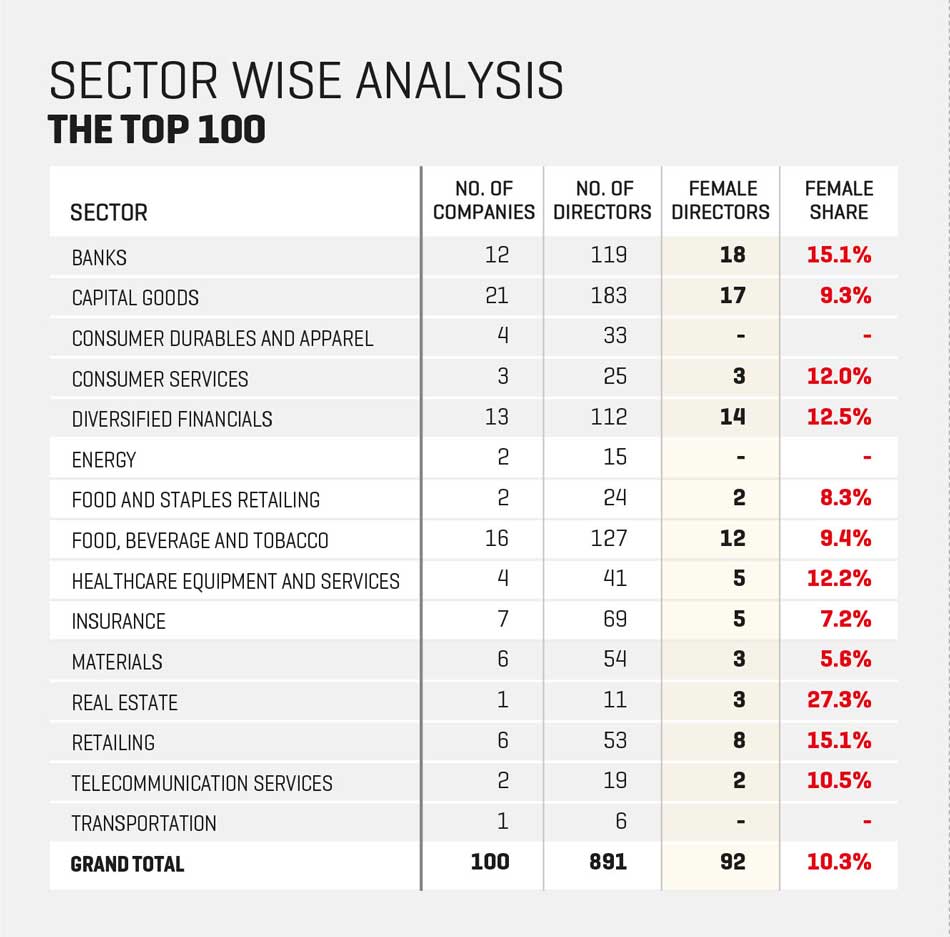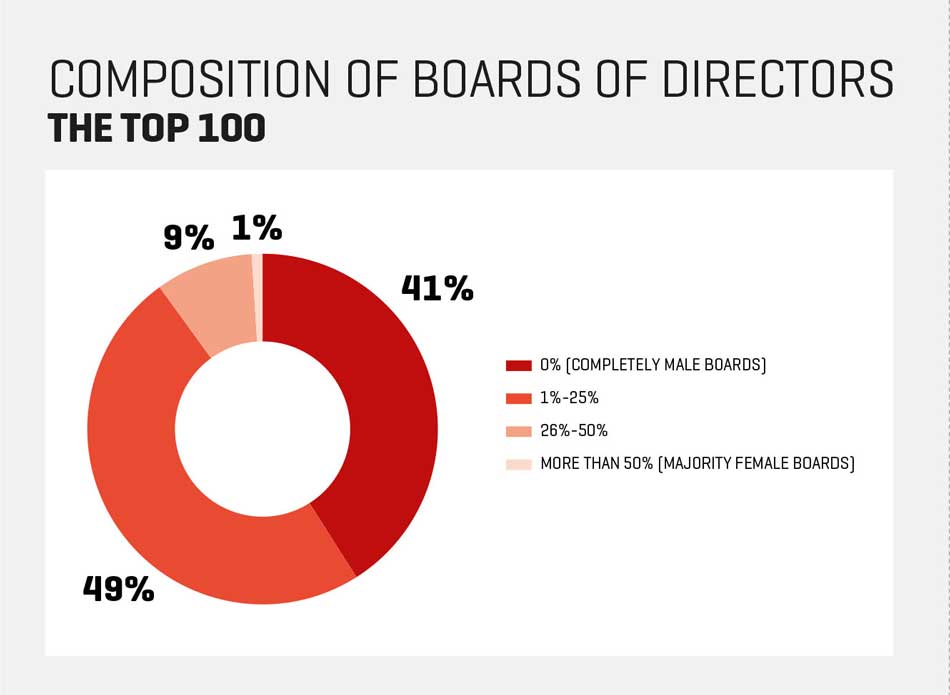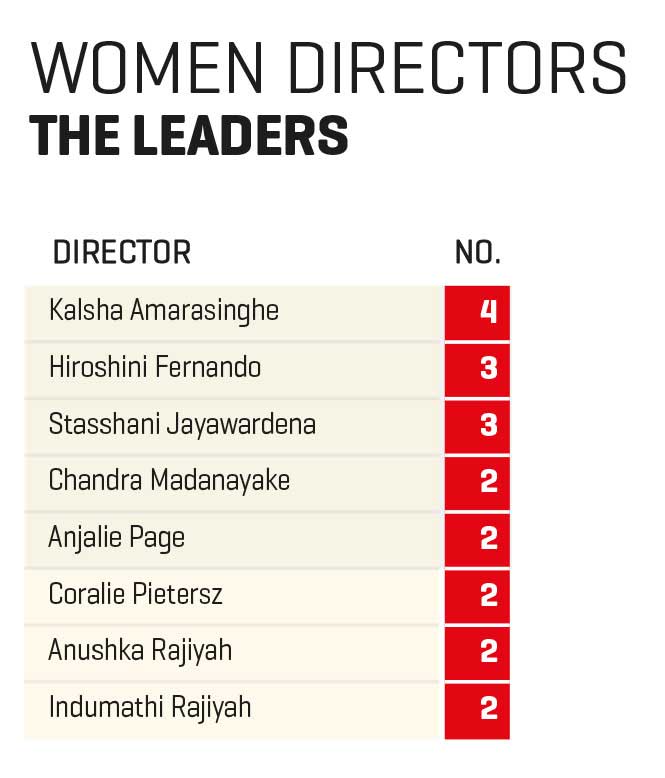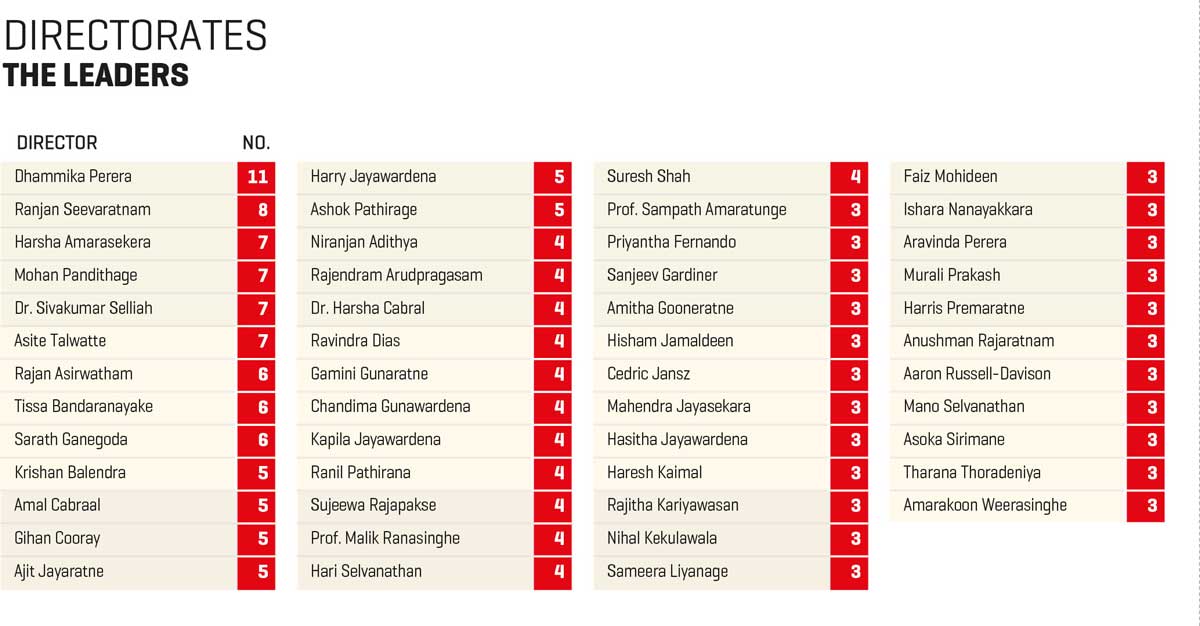BOARD BALANCE | 2019/20
THE GENDER SCORECARD
Female representation on the boards of directors of Sri Lanka’s listed companies
“Extensive research shows that gender diversity is good for business and good for the economy. Companies that draw their talent from the widest pool of skills, experiences and perspectives will gain [a] competitive advantage. And economies that engage, remunerate and empower their women will advance faster,” says the IFC, in its report titled ‘Realizing Sustainability Through Diversity: The Case for Gender Diversity Among Sri Lanka’s Business Leadership.’
The global development institution points to research by McKinsey suggesting that equal participation of men and women in the economy could add up to US$ 20 billion to Sri Lanka’s GDP, while adding: “Without greater female representation at all levels in the economy, from the mass of the workforce to senior positions in management and boards, companies are losing out on an important segment of talent.”
“Only when men and women alike are empowered to make decisions, and pursue employment, entrepreneurship, and leadership, will the nation reach its full economic potential,” the IFC affirms.
When it comes to the situation on the ground, Sri Lanka was ranked No. 102 in the World Economic Forum’s (WEF) Global Gender Gap Index 2020, lagging behind Bangladesh (50) and Nepal (101), but ahead of India (112), the Maldives (123), Bhutan (131) and Pakistan (151).
As for the sub-indices pertaining to ma tters of economic participation and opportunity, educational attainment, health and survival, and political empowerment, Sri Lanka was ranked 126th, 88th, first and 73rd respectively.
tters of economic participation and opportunity, educational attainment, health and survival, and political empowerment, Sri Lanka was ranked 126th, 88th, first and 73rd respectively.
The country registered a female labour force participation rate of 32.5 percent in the first quarter of 2020 compared to 34.9 percent and 33.5 percent in the parallel quarters of the preceding year and 2018 respectively.
What’s more, the female unemployment rate stood at 9.6 percent in the first quarter of 2020 whereas the corresponding percentages for 2019 and 2018 were 6.9 percent and 7.4 percent respectively.
In terms of gender representation on corporate boards globally, men tend to occupy more board seats than women. And there is much debate over the reasons for this disproportionate gender ratio of directors.
With gender diversity on boards being an issue that is rooted in the principle of equal treatment, inequality in gender representation on boards could be tackled by way of equal opportunity reforms, equal outcome reforms or the spread of information with regard to gender bias.
Governments and corporations have sought to address the disproportionality of gender representation on corporate boards through both types of the aforementioned reform measures, which include legislation mandating gender quotas (equal outcome reforms) and comply or explain guidelines (equal opportunity reforms).
Meanwhile, an analysis of the LMD 100 in financial year 2019/20 considers the number and share of directorships held by females. It also provides a breakdown of female representation on company boards in the context of 15 business sectors ranging from banking, diversified financials and insurance, to telecom services, retailing and more.
An in-depth study of the data indicates that 41 percent (versus 44% in the previous year) of leading listed company boards in Sri Lanka consist entirely of males whereas the majority (49%) of our boardrooms reflect between one percent and 25 percent female representation. This leaves nine percent with a female representation of between 26 and 50 percent.
Meanwhile, a mere one percent of LMD 100 corporates have a majority (i.e. more than 50%) female board of directors.
In cumulative terms, the share of female representation on the boards of the foremost listed entities in Sri Lanka amounts to slightly more than one in 10.
As far as the sector s are concerned, real estate boasts the highest female board representation (27.3%) followed by banks (15.1%), retailing (15.1%), diversified financials (12.5%), healthcare equipment and services (12.2%), consumer services (12%), telecommunication services (10.5%), food, beverage and tobacco (9.4%), capital goods (9.3%), food and staples retailing (8.3%), insurance (7.2%) and materials (5.6%).
s are concerned, real estate boasts the highest female board representation (27.3%) followed by banks (15.1%), retailing (15.1%), diversified financials (12.5%), healthcare equipment and services (12.2%), consumer services (12%), telecommunication services (10.5%), food, beverage and tobacco (9.4%), capital goods (9.3%), food and staples retailing (8.3%), insurance (7.2%) and materials (5.6%).
At the other end of the spectrum, consumer durables and apparel, energy and transportation have the dubious honour of not having any female board representation. And notably, among the females on the boards of Sri Lanka’s leading listed corporations, several hail from families who have a controlling interest in them.
Given that females represent a little over 10 percent of the boards of LMD 100 companies, there’s ample room to work towards a more healthy gender balance in corporate directorships.
The hope is that listed establishments will make good on the promise of improving the gender balance in line with – but not limited to – a proposal included in the national budget for 2019 to encourage more women’s representation on corporate boards vis-à-vis measures introduced by the Securities and Exchange Commission of Sri Lanka (SEC).





